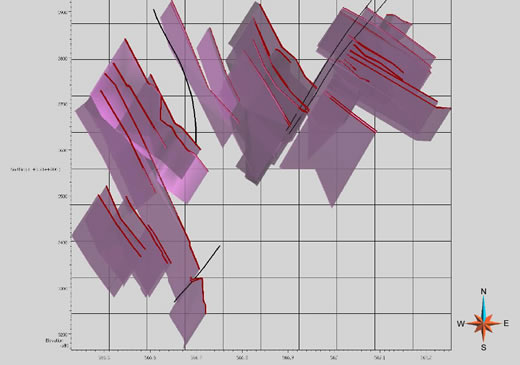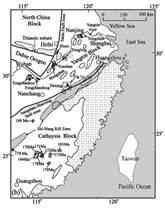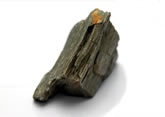Zhangjiafan Gold Mine, PRC.
Geological Settings
The Zhangjiafan gold deposit was found in 1989, after the discovery of the Shangluo Gold Deposit and Hama Gold Deposit in 1986. The concession area of ZJF Gold Mine has been examined by several accredited parties; The Northeastern Geological Brigade, No.104 Geological Brigade and No.106 Geological Brigade of Jiangxi Province, Nanchang Nonferrous Metallurgy Design and Research Institute and Ganxibei Brigade of the Jiangxi Province Bureau of Geology.
Regional Geology
The mine property is situated in the Jiangnan Anteclise, the uplifted continental blocks of the Yangtze platform which was overthrust against the Cathaysia arc during the Late Proterozoic orogeny, marked by high pressure and low temperature metamorphism. The distance between the 2 platforms is the shortest in South China and rocks are strongly compressed, resulting in major uplift and significant erosion.
The regional geology of the ZJF Gold Mine is dominated by the Yanshanian Mesozoic volcanoplutonic belt and consists of thick accumulations of pyroclastic deposits and numberous sub-volcanic granite intrusions. The Shuangqiaoshan Group, which occupies 70% of the region, consists of a low-grade metamorphosed suit of volcano-sedimentary and pyroclastic rocks and intercalated meta-lavas.
Local Geology
The ZJF Gold Mine is controlled by a large-scale, deep-seated, NE trending Gandongbei ductile shear ophiolitic complex zone, and is located at the part of the Hama goldfield which is situated in the Jiangnan Anteclise on the southeast margin of the Yangtze platform. The rock type commonly observed is phyllonite of the Mesoproterozoic Shuangqiaoshan Group.
The surface layer of the Shuangqiaoshan Group is a low metamorphic rock series of synclinal flyschoid units that generally strike NE, but changes to NW in the vicinity of ZJF Gold Mine because of the influence of intrusive rocks in the Dexing porphyry copper deposit area. The most developed and common rock type associated with the gold mineralization is phyllonite. Phyllonite is formed by the effect of high tectonic pressure creating ductile shear tectonic strain in high clay content rocks and thin schistose layered primary rocks such as sericitic phyllite, chlorite sericitic slate, thin badding silty slate, and dacitic tuff.
Mineralization

Preliminary reconnaissance investigation reveals that the mine property encompasses at least six auriferous quartz veins which generally strike NW-SE and plunge towards SW 220°-240° with plunge angles of 30°-70°.

Surface projection of veins interpreted under NI 43-101 compliant resource estimation
Independent, NI 43-101 compliant resources and exploration targets at the Zhangjiafan Gold Project estimated that 31 veins hosting or potentially hosting Au mineralization by using geological modelling and resource estimation software.
Mineralized bodies are composed of quartz veins interbedded with phyllonite (quartz-phyllite) or phyllonite interbedded with quartz veins. Phyllonite exhibits mylonitic and lepido-blastic textures, phyllitic structure, axial folding schistosity and numerous small quartz lenses. The phyllonite rock is intensely altered by silicification, pyritization, chloritization, and sericitization and variable degrees of gold mineralization.







